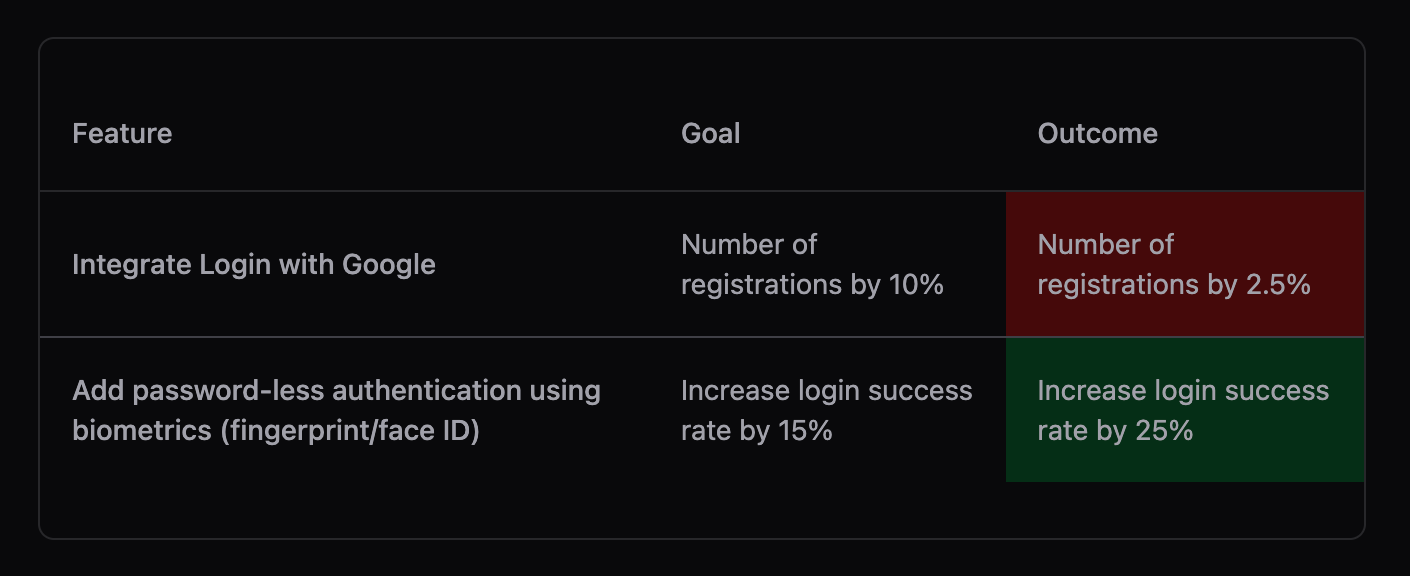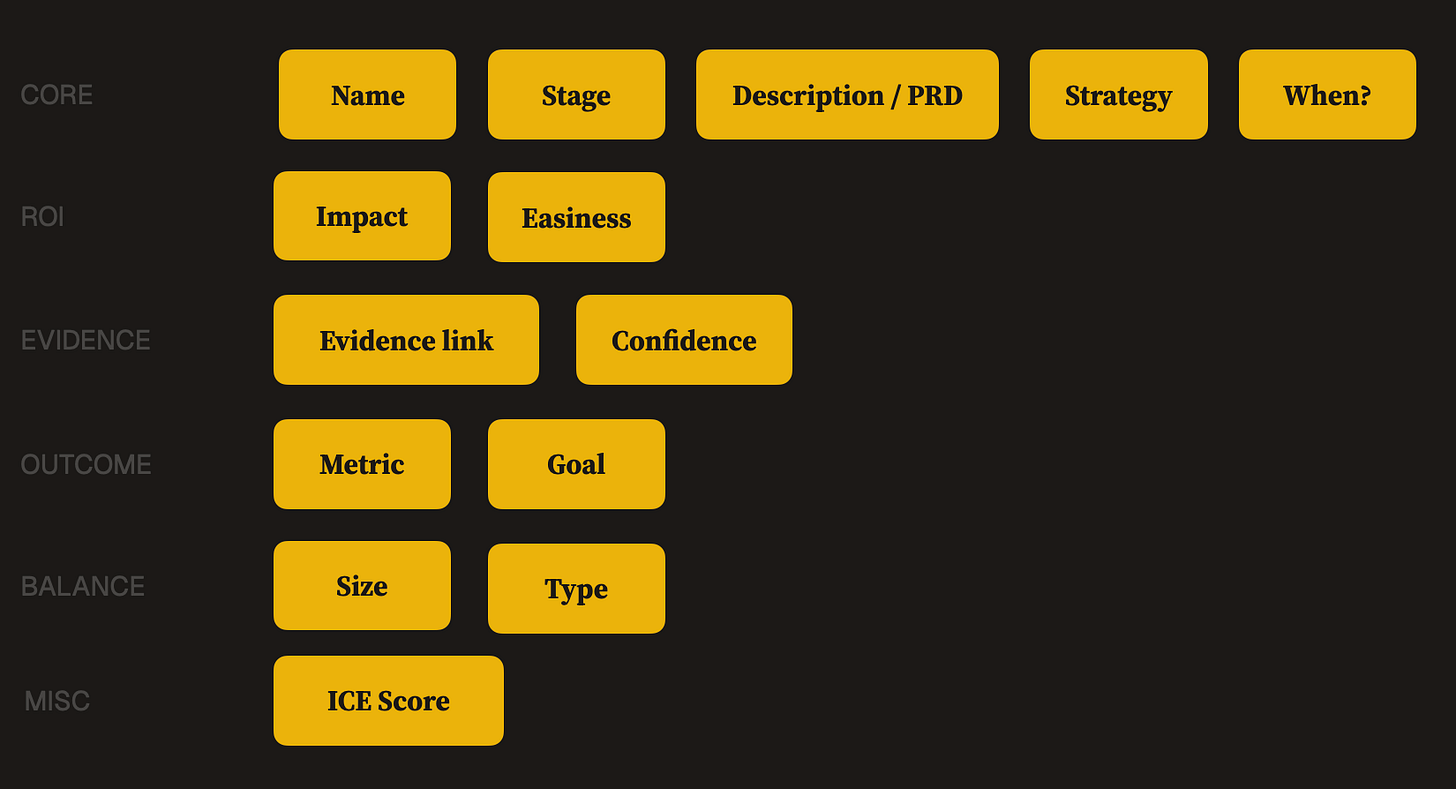In my career, I've created over a dozen product roadmaps. Most of them were wrong, not just slightly off, but fundamentally wrong. It wasn't until I was sitting in a quarterly review, watching my meticulously planned roadmap get demolished by market realities, that I truly understood what a roadmap should be.
Why You Should Care
I've seen countless products fail not because of poor execution but because of poor direction. One of the most painful lessons I learned was watching a team spend six months building features that perfectly matched our roadmap but completely missed evolving market needs. I have my share of scar tissue.
You can build a roadmap, and you can build a GOOD roadmap.
Here's what a good roadmap does:
It provides a strategic context for daily decisions
It aligns stakeholders around common goals
It makes prioritization discussions more productive
It helps teams say no to ideas that don't serve the current strategy
And perhaps most importantly, it forces you to think. Funnily enough, creating a roadmap for the first time can sometimes provide more value than the roadmap itself.
11 Principles of Great Product Roadmaps
A great product roadmap isn't a list of features or a Gantt chart. It's a story about how you'll solve customer problems and achieve business outcomes.
I won’t be advocating for any framework - I will point to some notable examples, but I want to arm you with something stronger - principles that will last.
Through my 20 years of dancing with the roadmaps, the best ones I've found consistently demonstrate these eleven core principles:
Great Roadmaps are Strategy-Driven. Your roadmap is not a collection of random features but a direct, logical result of your Product Strategy. When I look at a roadmap, it should be very, very obvious what your strategy is. You can read more about the Strategic Pyramid here. I've seen too many roadmaps that are just a collection of feature requests from sales or executive pet projects. These inevitably lead to products that lack coherence and fail to move key metrics. The best roadmaps I've created started with a clear strategic foundation—every item can be traced back to core strategic objectives. Strategy is your first check when prioritizing features. Does it fit your strategy? If yes, consider it. No? Park it.
Great Roadmaps are Outcome-Oriented. Focus on the impact and outcomes rather than just feature completion. Shipping features and marking them as "Done" doesn't mean they were successful. You need to measure against actual business and user goals. I recall so many celebrations about shipping something, only to realize we hadn't moved the needle on any meaningful metrics—sad panda. Great roadmaps define success in terms of customer and business outcomes, not feature completions. This shift in thinking transforms how teams approach problems and often leads to more straightforward solutions that actually work. Every item that you decide to work on should have a goal and the actual result, like so:
Great Roadmaps are not focused purely on development. Avoid rushing into development. I've watched too many teams jump straight to building without understanding the problem. Follow a structured approach:
Wonder (Problem definition, opportunity assessment)
Explore (Solution definition, prototypes)
Make (Building and releasing)
Impact (Assessment and iteration planning)
All phases besides Make are quite cheap. Jump between phases, build only when you're confident. The most successful products I've worked on took time to understand the problem space before writing a single line of code.
Great Roadmaps are Prioritized. Use clear prioritization frameworks. As a starting point, consider the ICE prioritization framework. After many painful quarters of trying to do everything, I went with something simple. We started using these simple criteria to compare everything:
Potential Impact of the feature (1-10) on
Easiness of shipping it to production (1-10)
How much data we had to feel Confident about it (1-10)
Then you multiply it, compare, and have some conversations. Score features based on these criteria to make informed decisions:
Psst: The prioritization framework matters less than having a consistent, transparent way to make decisions. I've seen teams get paralyzed trying to perfect their prioritization framework while missing the point entirely. The best prioritization approaches create clarity and alignment, not mathematical precision. All frameworks can be hacked.
Great Roadmaps are Not Greedy. Balance your resources between new development, keeping the lights on, and technical debt. Don't go all in - distribute. I've seen many teams forced to spend 90% of their time on new features, only to watch their velocity grind to a halt as technical debt accumulated after 6 months. The most sustainable products I've managed to maintain this balance religiously, even under pressure to deliver more features. Your future self will thank you for this discipline. Here's one way to distribute it:
Great Roadmaps are Diverse. Use what I call the boulder-rocks-pebbles approach:
Boulders (20%) - Large, high-impact initiatives with a high level of uncertainty
Rocks (50%)- Medium-sized investments with a lower level of uncertainty
Pebbles (30%) - Small, straightforward improvements
The magic happens when you find the right mix—big enough wins to move the needle, medium initiatives to show consistent progress, and quick wins to maintain momentum and address urgent needs.
Great Roadmaps are Evidence-Based. Don't rely on gut feelings - I've made this mistake too many times and paid for it dearly. Support decisions with user research, market data, technical feasibility studies, and success metrics. It's not about having perfect data (you never will), it's about making decisions based on the best available evidence. Use Confidence meter (for example, in ICE prioritization) - the stronger the data, the more points you'll have:
The strongest roadmaps I've built combined quantitative data with qualitative insights, creating a complete picture of what users do and why they do it. Remember, the goal isn't to eliminate uncertainty but to reduce it enough to make informed decisions.
Great Roadmaps are Continuous. Don't treat roadmap planning as an annual event. Your roadmap should be rolling, evolving, and regularly reviewed and updated. Think of it as a living document that gets sharper the closer you get to execution. The best roadmaps I've managed were reviewed every other week with the team and monthly with stakeholders, allowing us to incorporate new learnings and market changes without losing sight of our long-term objectives. This continuous approach keeps your roadmap relevant and credible.
Great Roadmaps are Long-Term Focused. Maintain a 12-month rolling view while being more detailed in the near term: high precision for the current quarter, medium precision for the next quarter, and directional beyond that. This isn't about predicting the future - it's about providing enough context for strategic decisions while maintaining flexibility. This approach helps manage expectations with stakeholders who want certainty while giving teams the freedom to adapt as they learn more. The key is being explicit about the confidence level of each time horizon.
Great Roadmaps are Open & Transparent. Make your roadmap accessible to anyone in the organization. This transparency isn't just about sharing information - it's about building trust and enabling better decisions across the company. When I started making roadmaps truly open, something magical happened: sales teams started planning better, marketing became more aligned, and engineering could make better technical decisions with the bigger picture in mind. Yes, some will misinterpret it as a commitment, but that's a coaching opportunity, not a reason for secrecy.
Great Roadmaps are Run by Competent People. Ensure your roadmap is managed by people who understand the market, know the technology, can make strategic decisions, and communicate effectively. This might seem obvious, but I've seen too many roadmaps handed off to project managers or junior PMs who lack the context to make good decisions. The best roadmaps I've seen were led by product managers who could hold their own in technical discussions, understand business implications, and effectively communicate up and down the organization. They weren't necessarily experts in everything, but they knew enough to ask the right questions and facilitate good decisions.
These principles might sound obvious, but even experienced product leaders often miss these fundamentals. I certainly did early in my career. The key is working together to create roadmaps that focus on problems rather than solutions, embrace uncertainty while providing direction, and align teams around outcomes rather than outputs.
Looking back at all the roadmaps I've created, I see that the successful ones consistently followed these principles. The failures? They usually violated several of them. Of course, following these principles doesn't guarantee success, but ignoring them almost certainly guarantees failure.
If you want to translate these principles to Jira field / Excel columns / whatever you use, it would look something like this:
Remember, a great roadmap isn't about predicting the future perfectly—it's about providing a framework for making better decisions today. In my next section, I'll provide a practical example of implementing these principles.
How to implement it step-by-step
Add Product roadmap to your Transformation roadmap
Communicate the start of work on the practice to the team.
Assemble a strike team to work on the practice.
Define your Strategic Pyramid, or at least work on: Product Vision and Product Strategy
Set Strategies and Metrics
Define your key strategic initiatives that align with business goals and establish measurable metrics for each strategy. These strategies should directly support your overall product vision and have clear success criteria.
Example #1
Strategy name: PersonalizationGoal: Enhance user engagement through tailored experiences
Metrics:
Increase user session duration by 25%
Improve content engagement rate by 30%
Reduce bounce rate by 15%
Example #2:
Strategy name: Gamification
Goal: Increase user retention and product stickiness
Metrics:
Increase daily active users by 40%
Improve user retention rate by 25%
Achieve 50% completion rate for core features
Add Features Per Strategy
For each strategy, identify specific features that will help achieve your goals, making sure to consider technical requirements and dependencies. Include both user feedback and market demands in your feature selection process.
Example:Personalization features
AI-powered content recommendations
Machine learning algorithm development
User behavior tracking system
Content tagging framework
Custom dashboards
Drag-and-drop widget system
User preference storage
Widget marketplace
Smart notifications
Time-zone based delivery
Behavior-based triggers
Notification preference center
Prioritize features
Evaluate each feature by rating its Impact, Confidence, and Ease on a scale of 1-10, then calculate the ICE score (Impact × Confidence × Ease) to create a prioritized list. Use these scores to make data-driven decisions about feature priority.Decide What to Do and When
Take your prioritized features (but use your judgment, you should decide, not scores!) and organize them into time horizons (Now, Next, Later), considering both resources and dependencies.
Now should contain precise, well-defined items that are committed for the next quarter,
Next should include items that are planned but may need more discovery for the following 2-3 quarters,
Later should encompass strategic initiatives and ideas that need significant research or are dependent on earlier deliverables.
Balance the need for quick wins with longer-term strategic investments.
Repeat
Regularly review and adjust your roadmap based on actual results and new information, typically on a quarterly basis. Update your metrics, reprioritize features, and adjust timelines to keep the roadmap aligned with business goals and market needs.
Here's a rhythm example:
Monthly Check-ins
Track metric progress
Adjust feature specifications
Update timeline estimates
Quarterly Strategy Reviews
Evaluate strategy effectiveness
Update ICE scores
Reprioritize feature backlog
Adjust resource allocation
Annual Planning
Review and update product vision
Set new strategic initiatives
Plan major feature releases
Adjust long-term roadmap
PS: If you need help with implementing the Product roadmap, contact me. I have 20+ years of commercial experience working with bigger and smaller companies, upgrading product, design, and engineering teams to the next level. I can also connect you with experts on this subject.
Product Roadmap Template
This template walks you through the process of creating the strategy and corresponding metrics, through generating features and prioritizing them in the simple Now, Next, Later roadmap.
Download links:
Common Anti-patterns
The Feature Factory: Listing features without connecting them to outcomes
The False Promise: Pretending you can predict exact delivery dates
The Perfect Plan: Creating a beautiful roadmap that doesn't survive contact with reality
The Kitchen Sink: Trying to make everyone happy by including everything
The Time Trap: Spending more time maintaining the roadmap than talking to customers
Conclusion
A roadmap is just a tool. Its real power lies in the conversations it enables and the decisions it drives. The best roadmap doesn't predict the future perfectly—it helps your team make better decisions today.
I still get it wrong sometimes. But I've learned that being roughly right is better than being precisely wrong. Your roadmap should be a guide, not a guarantee. Use it to start conversations, not end them.
Linked cards
Here are other practices related to the Product roadmap:
Product strategy provides the logical sequence of big bets (projects, value streams) that will take you to Product Vision.
ICE prioritization is a framework for ranking ideas based on their Impact, Confidence, and Ease of implementation.
PRD (Product Requirements Document) is a detailed blueprint that defines a product's purpose, features, and success criteria to align stakeholders and guide development.
Empowered Autonomous Teams can decide what to build to solve the problem they're being assigned, without any excessive oversight.
Product goals provide targets on the list of metrics product team is asked to achieve.
Hope that's useful!
—
Piotr
PS: Support my work by clicking on the ♥️ ↙














